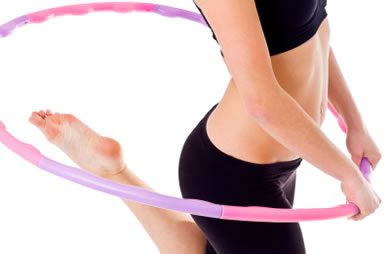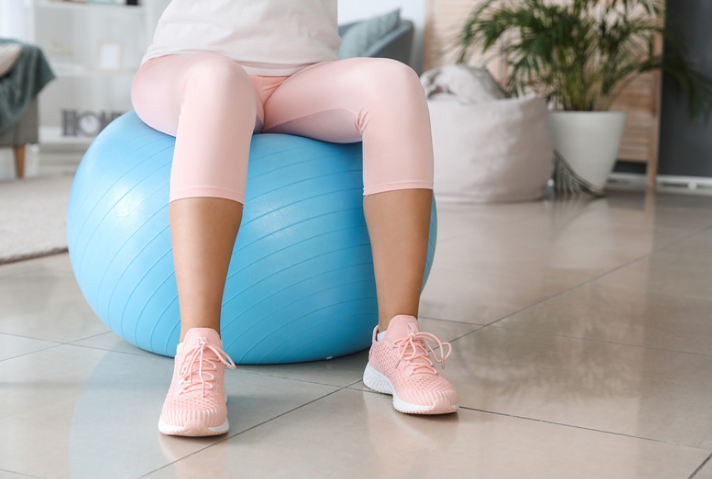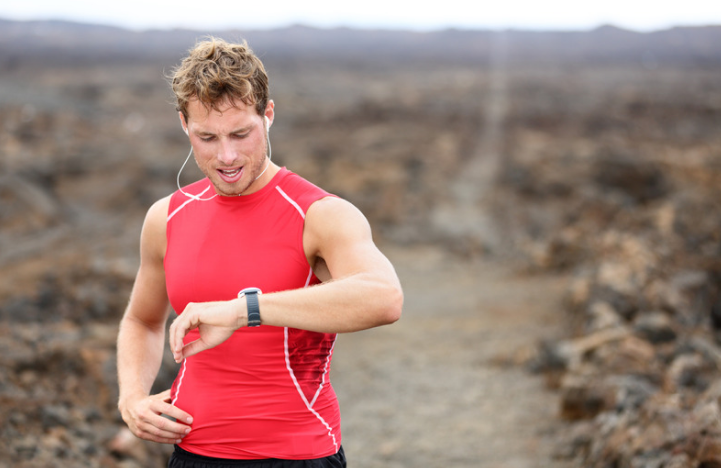Running may be challenging, but it is an activity humans were designed to do—and it's something nearly everyone can enjoy if we allow time and patience for our bodies to adapt to the demands of the sport. But that doesn't mean that proper running form will come naturally for you.
If you were to watch 10 different people run, you would notice that each one has a distinctive style. There is not one "correct" way to run. You should run the way that is most comfortable and efficient for you. However, you can still fine-tune your running technique, whether you're an experienced runner or a walker who is ready to jump into running. Every runner should understand the basics like proper breathing, posture, and foot strike. With proper form, you can help improve your performance and decrease your risk of running ailments and injuries.
Proper Running Posture
Just as you should maintain good posture when standing or sitting, maintaining a relaxed, upright posture while running is essential. Good posture will help release tension and reduce strain in the neck and shoulders, which can prevent muscle fatigue. The idea is to run in a relaxed manner with as little tension as possible. Follow these four proper posture principles to do just that.- Hold your head high, centered between your shoulders, and your back straight. Imagine your body is hanging from a string that is attached to the top of your head. Do not lean your head too far forward; this can lead to fatigue and tightness in the neck, as well as the shoulders, back and even your hamstrings. While a backward lean is not as common, doing so puts greater tension on your back and legs, so avoid that, too.
- Focus your gaze approximately 30-40 yards in front of you. Looking down when running can lead to greater strain on the neck muscles and spine, which can lead to fatigue especially in the latter part of your run.
- Relax your jaw and neck. Holding too much tension in your face and neck can lead to tension in other parts of your body, making for an inefficient (and tiring) run.
- Keep your shoulders relaxed and parallel to the ground. Do not pull your shoulder blades together as this increases shoulder tension. Your shoulders should hang loosely with a slight forward
roll for optimal relaxation. If your shoulders rise toward your ears or tense up during your run, drop your arms and loosely shake them out. Do this several times during your run. <pagebreak >
Arms and Hands
When you run, your arms (and hands) are just as important and powerful as your legs are. They provide power and speed as they propel forward. Proper arm and hand placement is just as important as good posture if you want to be a better runner. Here's a rundown of proper alignment and movement from your fingertips to your shoulders.- Lightly cup your hand as though you were holding an egg or a delicate butterfly. Don't make a tight, clenching fist, or keep your hands so loose that they become floppy.
- Keep your wrists loose. This will help you maintain a good hand and shoulder position—and avoid tension in the hands and arms that can work its way up to your shoulders.
- Bend your elbows at approximately a 90-degree angle with your elbows slightly pointed away from your torso. As your arms pump, your elbows should swing somewhere between your chest and waistline—not higher or lower than that. Carrying your arms too high can lead to fatigue, a shorter stride length, and increased shoulder tension; carrying them too low can lead to bouncing and a forward lean.
- Allow your arms to swing from the shoulders in a pumping motion from front to back. Be careful to prevent your arms from crossing the midline of your body.
- Pumping your arms at a faster rate will allow for faster leg turnover. However, make sure you do not put too much power into your arm movement unless you are doing speed work, running up hills, or powering yourself to get across the finish line. Your goal is to hold off fatigue and muscle tension.
Breathing
Over time, each runner will discover a breathing technique that works best for him or her. Whether you breathe through your nose, mouth, or a combination of the two, is a personal preference. Most runners find that mouth breathing provides the body with the greatest amount of oxygen.Whatever technique you choose to use, make sure your breathing is relaxed and deep. It may take
To practice belly breathing, lie flat on your back with a book on your abdomen. Slowly inhale as you watch the book rise, then lower the book by slowly exhaling. This takes focus, but over time, you will find it easier to do this type of breathing during your runs.
Side stitches (sharp, cramp-like pain in the trunk of the body) are quite common among new runners, and they can really put a damper on your workout. One cause of side stitches can be shallow, upper chest breathing. This is where belly breathing helps tremendously. By inhaling and then forcefully exhaling through pursed lips, you can very often help prevent the dreaded side stitch. Maintaining good posture, with your body in an upright position, also allows for better lung expansion, therefore permitting for greater delivery of oxygen to the muscles.
Finding Your Stride
One of the most common mistakes new runners make isOver time, your leg turnover or "cadence" will get faster. You may also find your stride lengthening, but this is not due to
Be careful not to lift the knees too high as doing so can lead to fatigue in the quadriceps (front of the thighs).
The Foot Strike
Foot strike refers to how, where, and when the foot hits the ground. There has been a lot of debate in the running community as to whether heel striking or mid-foot striking is a better approach to endurance running; however, the reality is that most average runners are heel strikers. In other words, they land with their heel first and roll to the ball of the foot. This comes naturally to most people, but striking with your heel can increase your risk of injury—especially to the knees—and may set you up for shin splint or hamstring injuries.Over time, it isn't uncommon for a runner to change her foot-strike as she develops greater muscle strength in addition to developing stronger connective tissues in his legs and feet. A mid-foot strike, in contrast to a heel strike, provides greater shock absorption, decreases strain on the calves and Achilles tendon, and may help prevent shin splints. As long as your foot strikes the ground directly below your center of gravity—not too far ahead (as explained in the "Finding Your Stride" section above
As you develop greater muscle strength and the connective tissues supporting the legs, eventually you may find your foot
Run to the Hills
Hills can bring anxiety and dread to runners of all levels. It is usually a runner's biggest concern when scoping out races or courses to run. Nevertheless, the more you practice, the better you can cope with the terrain changes you encounter.Runners should practice both uphill and downhill running, which both demand different running techniques. Uphill running requires greater power from the hamstrings (back thigh muscles),
Before you begin training on hills, it is best to have run on a flat surface for several months first. Even though many people believe uphill running poses a greater injury threat, it is actually downhill training that can pose a bigger risk, especially if you do not have a solid running foundation.
Once you start hill work, remember to keep these training runs to no more than 1-2 days a week, while allowing for adequate recovery before trying them again
Uphill Techniques
Uphill running burns more calories, improves oxygen delivery to the muscles, and can help an average runner train to become faster and more efficient on a flat terrain. Hills help a runner increase his or her leg turnover, and they increase strength and power in the leg muscles.Below are some changes you will need to make to your running form in order to conquer the hills safely and effectively.
- Attack or charge the hill while still maintaining the same rate of effort, but know that due to the gravitational pull, your speed will naturally be slower.
- Pick up your knees and shorten your stride while increasing your stride rate. Your stride should still allow for a landing in the center of gravity or just slightly ahead of the lead foot.
- Pump your arms at a slightly faster rate, keeping in mind that the steeper the hill, the more arm motion you will need to drive up the hill. This will help offset the gravitational pull.
- Lean into the hill, not from the waist or hips, but from the ankle. Leaning at the waist can lead to potential injury and lessen the expansion of the lungs. As Running Times magazine reporter Danny Dreyer once wrote: "Pretend you're a ski jumper gracefully extending yourself out over the tips of your skis, body fully extended."
Practice focusing on getting up that hill. Because uphill running requires greater strength and stamina than flat surface running, many times just taking control of the hill can help you conquer it.
Downhill Techniques
What goes up must come down. As much as - Because the potential for injury is much greater running downhill, it is very important to maintain the same running form as you would on flat terrain while still allowing gravity to do some of the work.
- While it is tempting to lean back when taking on these types of runs, it is very important to keep a slight forward lean at the ankles, similar to the technique you used
running uphill. - Instead of using your arms to increase power and speed, think of them as helping you maintain rhythm and balance.
- Land lightly on the ball of your foot as you run downhill so that your feet don't act as brakes and slow your forward progression.
You may find yourself a little overwhelmed after reading all that is involved in developing proper running form. Don't be. The most important point is to allow yourself time to adapt to the sport of running. Remember, relaxation, whether with your breathing, arm positioning or body posture, is the key to becoming the best runner you can be!












